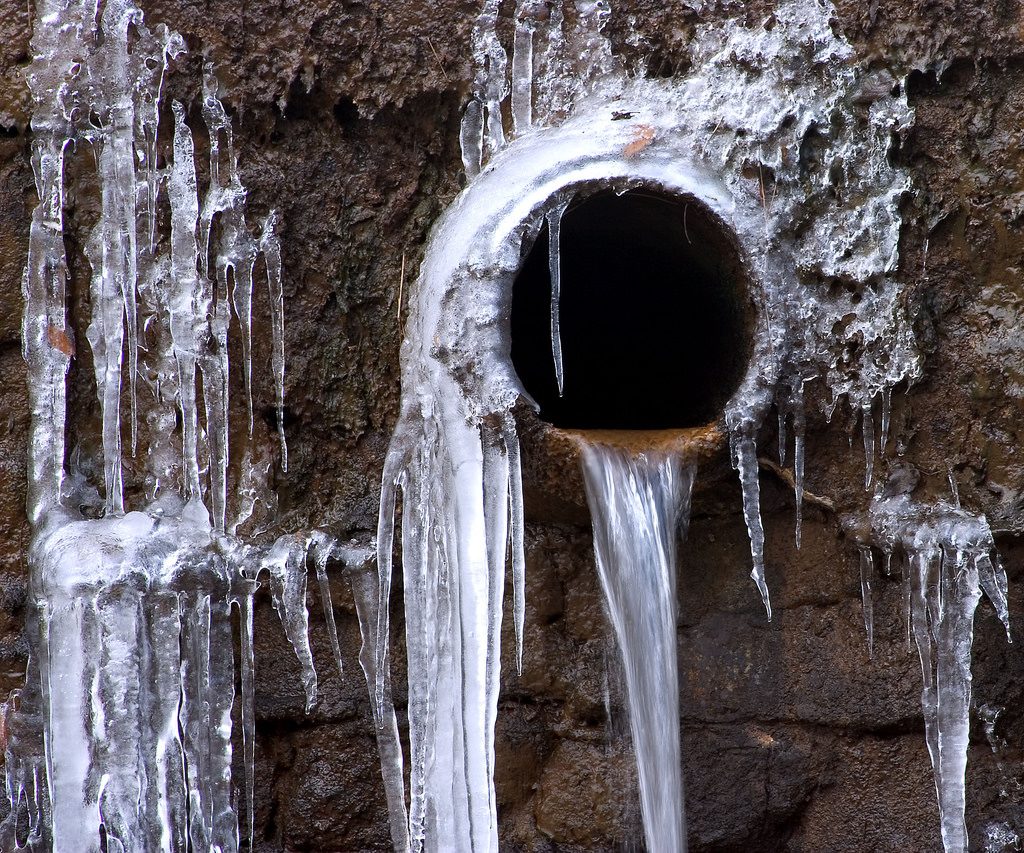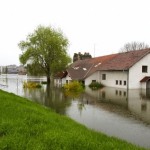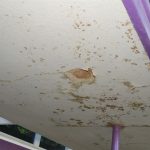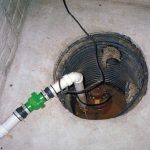When temperatures sink into the 20’s and below, the chances of your pipes freezing are much higher. In fact, one of the most common disasters during harsh winters is frozen and burst pipes, causing thousands of dollars worth of water damage.
Preventing Frozen Pipes

The pipes at the highest risk for freezing include those that are in unheated areas, like in attics, basements, and garages. Also keep in mind that the pipes that run through the walls and ceilings are also at risk of freezing. On the other hand, there are some steps you can take to prevent this from happening.
Preventative methods like pipe insulations are one of the best ways to avoid this disaster. They are an inexpensive investment and are more than worth it when it comes to protecting your property structure and surrounding belongings. The small investment will also save thousands of dollars in water damage cleanup as well as a headache when dealing with an insurance claim.
Steps for Preventing Pipes from Freezing
Once the temperatures start to drop, it’s extremely important to keep your pipes warm and water running. According to research conducted by the University of Illinois, the alerting temperature for freezing pipes is 20 degrees Farenheit. You should take these preventative measures right away if you have uninsulated pipes in uninsulated areas.
Some of these may not prove to be the most energy-efficient, but they won’t even compare to seeing the costs for pipe repairs.
Here’s how to prevent your pipes from freezing:
- Keep garage doors closed. Especially if there are water pipes running through the walls and ceilings.
- Open bathroom and kitchen cabinet doors. This will allow warmer air to circulate around the pipes. If you have any children or parents, make sure to remove any health and fire hazards.
- Let the water run a little bit. This will keep things moving throughout the pipe which prevents them from freezing.
- When leaving for vacation, keep the thermostat set to at least 55 degrees while you are gone.
- Add insulation to the pipes. Make sure to cover the ones that are in the attic, basement, and crawlspaces.
- Seal drafts. Keep cold air out by caulking windows, sill plates, doors, and where the home rests on the foundation.
Thawing Frozen Pipes
Unfortunately, many property owners won’t find out about the risk of water damage from frozen pipes until it’s already happened. One common way of finding this is by turning on the faucet and only a light trickle comes out. It’s important to proceed with caution now because the pipe may burst at any time and flood the home.
If you have a broken pipe, turn off the main water shutoff valve, which will stop the flooding. If the water is still running and the pipes are frozen, make sure to take the following steps:
- Turn on the faucet. When heating the frozen pipe, the block of ice inside will melt and you want to push it out. The flow of water around the pipe will help to melt the ice as well.
- Apply heat to the pipe. There are multiple ways you can do this: using a hair dryer, portable space heater, an electric heating pad, or by wrapping the frozen pipe with towels soaked with hot water. Never use a blowtorch, propane or kerosene heater, or anything with an open flame as it can damage the pipe and even start a fire.
- Continue applying heat until ice is melted. Until full water pressure is restored, don’t stop using the heating methods mentioned above. Keep in mind that more than 1 pipe may be frozen so be sure to turn on all faucets to make sure water is flowing freely.
- Call a plumber. If you aren’t able to find the frozen pipe yourself, you’re not able to thaw it, or the frozen pipes burst, don’t hesitate to reach out to a licensed plumber immediately.
Tips for Using Space Heaters
If you choose to have a space heater, it’s important to practice safety at all times. But according to Consumer Reports, space heaters are one most effective ways for heating average-sized rooms. Companies like Lasko, Vornado, and Honeywell are among the best to invest in.
While it’s not recommended to use space heaters in the bathroom, if you do need one, make sure to use an outlet with a ground-fault circuit interrupter and never an extension cord.

Water Damage Cleanup from Frozen Pipes
Once the pipes are repaired and the main water valve is off, call an emergency restoration company immediately. The longer the water is left to sit in the building materials, the worse the damage will get. Mold can even start to grow within 24 hours of water damage, needing as little as excess moisture in the air to develop.
A disaster restoration company that is licensed, experienced, and available 24/7 will be your best option when it comes to returning the area to its original condition. As soon as they arrive, they will immediately begin extracting the water while setting up professional dehumidifiers to remove the remaining moisture particles.
They will also address the damage to the affected household items, like small appliances, rugs, and other high-value items. This is known as contents restoration.
Just be sure to have the contact information of a restoration company near you in the time of emergency.





